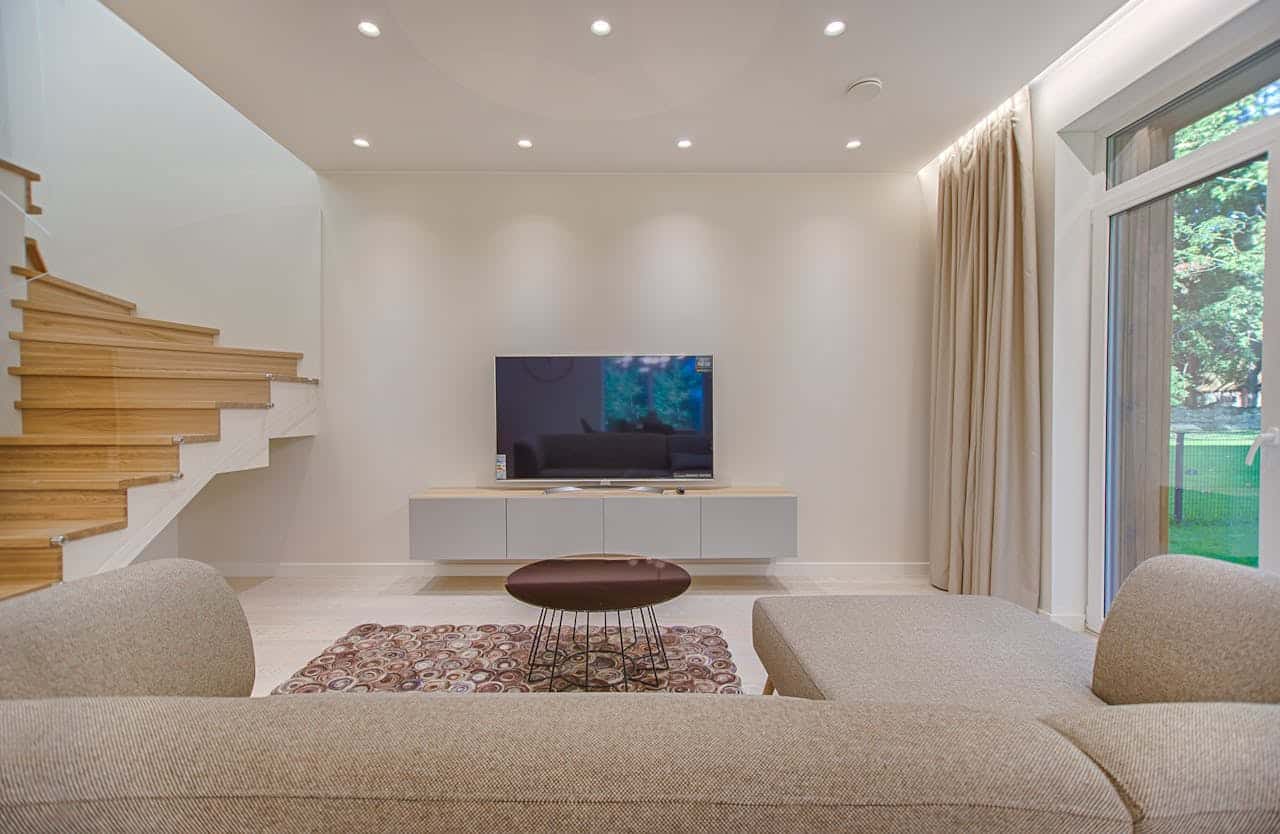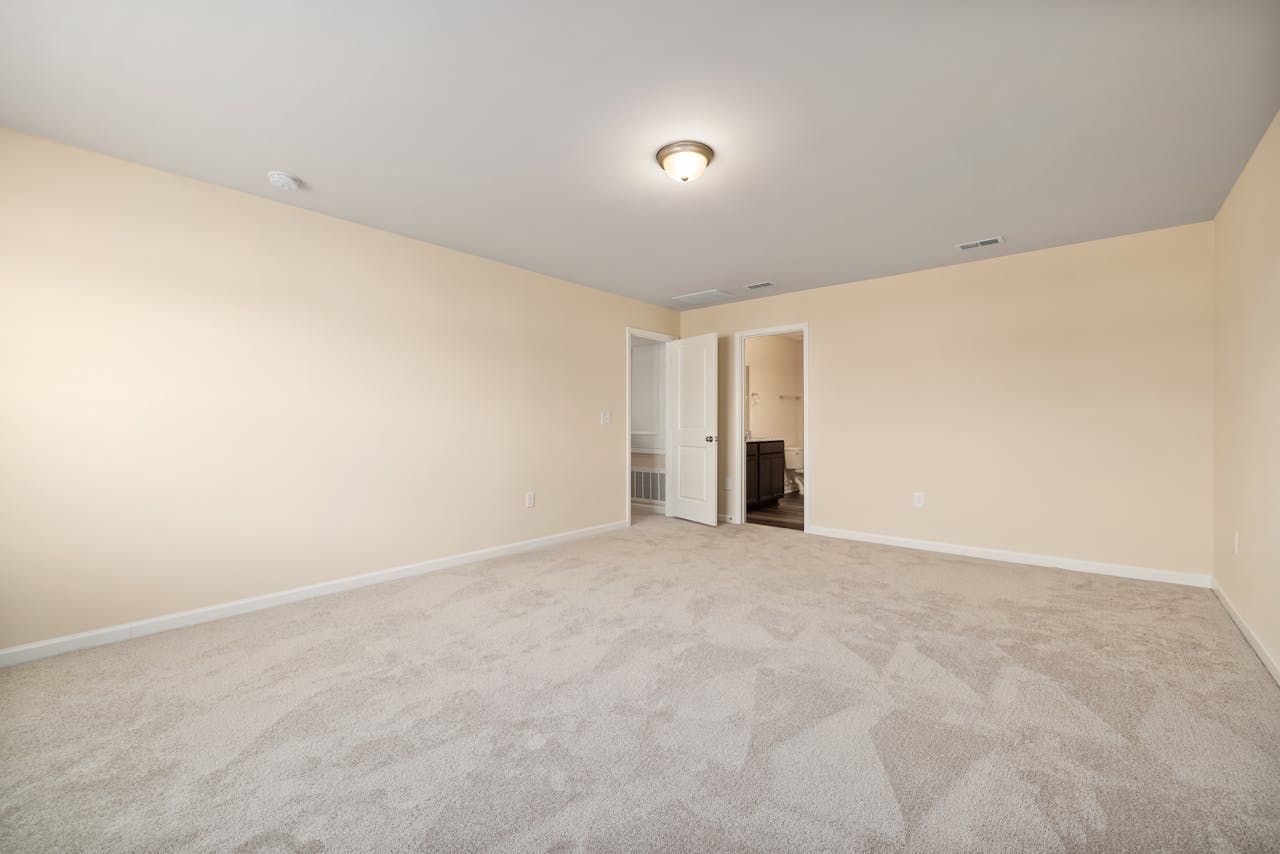Flooring plays a significant role in elevating any space’s overall aesthetics and comfort. Multiple types, materials, colors and textures of floorings and their accessories are available in the market to help people augment the appearance and feel of their homes, offices, and outlets.
This article is your no-nonsense guide to choosing the right flooring and accessories types for your living space. It contains authentic information about the materials used in different types of floorings, their pros and cons, best use cases, and more.
So buckle up as we embark on the journey to explore flooring and accessories types:
Flooring and Accessories Types
1. Vinyl Flooring

Vinyl flooring is one of the most durable and stylish flooring types available. The price of vinyl flooring usually depends on the density of the tiles or planks used, which is created by pasting the top-wear layer to a level of cushion and felt.
Benefits
- Offers a cushioning feel over the surface and flexibility
- Moisture-resistant
- Resistant to stains and scratches
- Convenient maintenance — a quick mop or sweep is often enough
- DIY-friendly
- Multiple design options
- Weather resistant
Best Use-Cases
- Entryways, hallways and other high-traffic spaces
- Washrooms, basements and areas susceptible to moisture
- Kitchens, laundry spaces and bathrooms
2. Wood Flooring

With its ageless elegance and pragmatic nature, Wood flooring is one of the classic flooring types being preferred by many homeowners. It is available in slabs, inlaid patterns and logs as well as various natural colors, such as mahogany and oak and looks nice with a vast array of decor trends.
Benefits
- The natural elegance of wood gives cosiness and beauty to your space
- With apt care, wood floors may last for generations
- A range of finishes, which provides customization options to cater to various preferences
- Can be restored multiple times
- Good investment because it increases your property’s value
Best Use-Cases
- Bedrooms and living rooms
- Spaces where a vintage, conventional appearance is required
3. Luxury Vinyl Tile (LVT)

Luxury Vinyl Tile is created with plastic with wood imagery on the top. The main elements include plasticizers, polyvinyl chloride resins, trace stabilizers, pigments and a carrier sheet. LVT offers luxury without the hassle as it doesn’t need high upkeep while looking as lavish as natural materials.
Benefits
- It realistically mimics the appearance of natural materials such as wood and stone offering a sophisticated aesthetic
- The click-and-lock system makes installation effortless saving time and energy
- Comfort underfoot which is absent in ceramic tiles or traditional stone
Best Use-Cases
- Spaces with high foot traffic
- Areas where a lavish look without high maintenance is desired
4. Deck Flooring

This flooring type isn’t just ideal for homes’ backyards but it can amplify interiors’ aesthetics as well. Deck flooring smoothly and effortlessly links the exterior and interior areas of a property furnishing a natural and welcoming vibe.
Benefits
- It offers some uniformity between exterior and interior spaces offering a natural and welcoming environment
- With apt maintenance, this flooring type could bear the elements making it the best choice for both outdoor and indoor use
- Offers a cosy and natural feel
Best Use-Cases
- Enclosed porches and sunrooms
- Areas where the users want to connect with nature
5. Stone Plastic Composite (SPC) Flooring

It stands for Stone Plastic Composite. SPC flooring is the latest and revolutionary flooring type, which is a refined version of LVT (Luxury Vinyl Tiles). The body of SPC flooring is made of a PVC polymer and stone particles blend.
Benefits
- 100% waterproof, which makes it an excellent option for spaces susceptible to water and spills
- The stone core supplies incredible withstanding to impacts, assuring a long lasting and durable floor
- Gorgeous aesthetics
- Hassle-free installation
- Helps improve air quality
- Lower cost of installation
- Eco-friendly
- Offers noise-proof environment
Best Use-Cases
- Commercial areas with high foot traffic
- Spaces with possible exposure to spills and moisture
- Spaces where a dent-resistant floor is required
- Areas prone to climatic factors
Flooring Accessories
1. Skirting Boards
People give less attention to skirting boards than they deserve but they are paramount to create a sleek and coherent appearance. Many interior designers suggest using skirting boards to finish flooring projects.
Baseboards also called skirting boards offer not only a finishing touch but also accomplish practicality while beautifying the overall look.
Functions
- for walls from vacuum cleaners and furniture blemishes
- Hiding spaces between walls and the floor, supplying a smooth shift and safeguarding walls from deterioration
- A beautiful transition between walls and the floor
Design Options
- Fashionable, simplistic motifs
- Vintage wood finishes
2. Beading
Beading is akin to skirting but to a smaller extent. It is a fine yet worthwhile accessory. It’s mostly utilized with laminate floor options to conceal expansion gaps.
Benefits
- Conceals the space between the walls and the laminate floor, fostering a neat and sleek look
- With several hues and finishes, beading supplies sophistication to various flooring motifs
- Convenient to install and upkeep
- Elevates the overall aesthetic appearance of the flooring
Design Options
- Several shades and finishes to match a variety of flooring styles
Floor Design Ideas
1. Combining Flooring Types
A mixture of flooring types becomes a symphony of style. Interior designers can use their creative instincts to blend various flooring options to foster aesthetically attractive patterns. Combining flooring types is becoming increasingly popular in interior design.
Flooring companies can come up with an array of creative flooring designs. Combining various flooring options could develop aesthetically pleasing patterns and delineate spaces.
Ideas
- Shift from wood to LVT for a smooth look and to incorporate a dab of finesse
- Employing carpets strategically to outline particular spaces within an open floor plan, providing both ease and elegance
2. Inlays and Patterns
Flooring designers can improve their flooring motif by adding patterns and inlays. Design experts often use floorings with inlays and patterns to mark someone’s taste and make a powerful statement in any space.
Flooring companies beautify flooring motifs with inlays and patterns. Whether it’s a customized inlay or geometric pattern, these incorporations could demonstrate somebody’s taste.
Famous Patterns
- Chevron for a contemporary twist that gives a modern and vibrant touch to your room
- Herringbone for a vintage and ageless appearance that goes beyond trends
Importance of Flooring in Home Design
Designing an alluring interior space demands that each room component is given equal importance. People sometimes overlook flooring as an interior design element, but it plays a pivotal role in elevating a space’s overall feel and appearance.
Let’s look at some of the reasons why flooring is important in interior design:
1. Flooring Sets the Foundation
Flooring works as the basis of a home’s design. Wrongly selected or mismatched flooring solution will look like an anomalous element in a diligently designed space. It makes the vibe for the entire room serving as a background upon which all other components are placed.
2. It Shapes Style and Mood
The flooring type you pick could substantially impact the vibe and motif of a space. For instance, wood flooring develops an inviting, cozier room making it an ideal solution for classic and contemporary interiors. Parquet flooring and other patterned styles of flooring extend a touch of luxury and look nice in modern houses and high-end spaces.
3. It Balances Colors and Texture Elements
Flooring consolidates different aspects of interior design in any space. It can beautify the color scheme and texture of walls, decor, and furniture, nurturing a balanced aesthetic impact. The correctly chosen flooring improves the vibrancy of shades and underscores delicate textures in the space.
4. It Harmonizes Practicality and Motif
An interior design should be practical as well as visually appealing. Various spaces have their unique needs, and the flooring should fulfill them if you wish to avoid issues down the road. High-traffic spaces such as kitchens and hallways need long-lasting floorings that can bear daily wear and tear.
Good flooring like laminates, real wood, and vinyl will make the interior design functional as they are designed to last long.
Final words:
Flooring is a significant element of interior design and can make or break the first impression of a space. The flooring type greatly impacts a space’s aesthetics and ambiance. Contemplating the advantages and best use cases of every option aids homeowners in choosing flooring that goes with their preferences, budget, and lifestyle.
Also Read:
Choosing the Right Vinyl Flooring for Your Home
The Timeless Appeal of Wood Flooring
Luxury Vinyl Tile (LVT): A Cost-Effective Luxury
Enhancing Your Space with Floor Skirting
The Art of Floor Tile Skirting
Decorative and Functional: Skirting Board Floors




